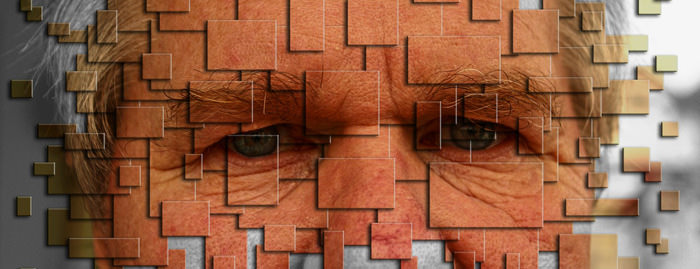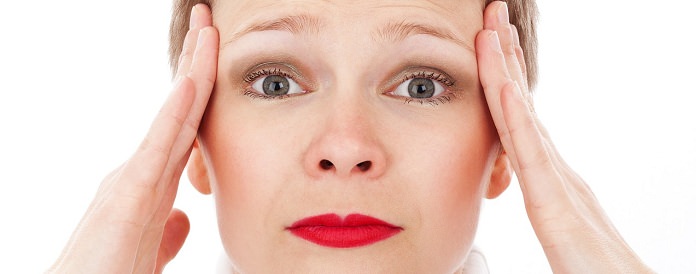






Whatsapp Group+91 98450 81888
HOME REMEDY IN INDIA
MANGALORE.INDIA
Hands that serve are Holier than Lips that Pray
How Migraines are Diagnosed and TreatedBy Dr. Arieh Kuritzky – Chief Neurologist When people go to see a doctor, headaches are one of the most common complaints. Approximately 80% of the population experiences a headache at least once a year. Headaches can be split into two categories: Primary and Secondary. Primary headaches are the kind of headaches whose primary cause is unclear. In this group you will find Migraines, Cluster Headaches, Tension-Type Headache and other more rare types. The Secondary group includes headaches with a known cause that have an effective treatment helping to alleviate the pain. This group includes Sinus-Related Headaches, Meningitis, headaches caused by damage to the jaw joints, Intracranial Bleeding or pressure and headaches related to different parts of the face: eyes, teeth, muscles and the nerves of the skull. This review deals with the Primary Headache known as a "Migraine". |
 |
What is a Migraine? Migraines have been part of humanity since antiquity. The name comes from the ancient Greek word "Hemicrania", meaning "half a head". Migraines are characterized by bouts of headaches, mainly on one side of the head, which can last anywhere from 4 to 72 hours and are accompanied by nausea, vomiting, and increased sensitivity to light and noise. Clinical diagnosis is done by a physician, based on the symptoms the patient complains about. Currently, there is no known testing method to conclusively confirm migraines. Since 1988, migraines are diagnosed according to the criteria set by the International Headache Society. (HIS) The Official Criteria for Diagnosis of Migraines:
|
 |
Two Major Types of Migraines: We differentiate between two types of migraine: With or without an aura. The aura is a temporary perceptual disturbance which typically appears some time prior to the beginning of the headache. It usually lasts for about 20-30 minutes and often includes symptoms like blurred vision, partial blindness, visual hallucinations (bright lights or zigzagging lines), "holes" in the field of vision and in some cases – complete blindness. In more rare situations, auras manifest as a feeling of weakness, as well as pins and needles felt in half of the body - and even severe dizziness. About 15% of all migraines are accompanied by auras. Two thirds of people experience migraines without an aura and the rest experience it intermittently. The headache lasts between 3 hours and 72 hours and is accompanied by symptoms like nausea, vomiting, photophobia, phonophobia, sweating, diarrhea, paleness and in severe cases – a fugue state. Recently, attempts have been made to simplify diagnosis by a family doctor by interviewing many people who suffer from migraines and finding the most common complaints shared by them all. It has been proven that a migraine can be positively diagnosed if the patient has 2 out of 3 of the following symptoms: Nausea, Photophobia, and Diminished Capacity. In the US and Europe, around 16% of the general population suffers from migraines. The phenomena is more prevalent in women, standing at 20-23%, where only 10-12% of men suffer from it. The frequency amongst prepubescent children stands equally at 4%, but rises more rapidly in women and peaks at the age of 40. Attack frequency is around 1.5 per month, and about 10% experience an attack once a week. The quality of life for a person suffering from frequent migraines is low, and considered as one of the most debilitating diseases there are. The disease harms the sufferer's health, their family ties, their social functions and their ability to study and work. This quality is similar to that of people suffering from clinical depression and worse than of people who have diabetes, high blood-pressure or just experienced a heart-attack. Genetics Migraines are known to be hereditary. Specifically, in one type of rare migraine, the hereditary cause was found in the 19th chromosome of the area that regulates the absorption of calcium ions into the cells, a function the cell requires to preform normally and transfer signals to other cells. The genetic defect blocks the channels the calcium is absorbed through, which leads to cell functions being disturbed. The problem is that the gene responsible for the common migraine has not yet been identified. At this time, a vast research is being conducted in order to find the relevant genetic defect. How Migraines Happen Migraines are probably a disease in the brain and not in a cardiovascular one as previously though. Auras are probably caused by diminished functions of a certain part of the cortex, which progresses in a steady pace and is accompanied by a decrease of blood flow to those parts. The headache begins when blood-flow decreases and therefor is not related to the expansion of blood-vessels as previously thought. The changes in the cortex seem to affect the brain-stem, which causes the expansion and inflammation of the intracranial blood vessels (most likely the cause of the pain). The brain stem is the cause of the other symptoms, like nausea. |
 |
Treatment Treatment can be divided into medicinal and behavioral. Behavioral treatment focuses on changing certain habits and avoiding things that exacerbate migraines. It appears that the brain of a patient suffering from migraines is affected by extreme situations, and thus, they need to make sure they get regular and sufficient sleep and food and avoid stress. In other words, people who suffer from migraines must avoid states of extreme hunger, stress or fatigue. In addition, some foods may also lead to migraines, so it is important to recognize them and avoid them completely, though there is no specific food that causes migraines, making recognizing these foods an individual's responsibility. A person suffering from migraines needs to monitor their daily routine and pinpoint the things that exacerbate or trigger migraine attacks in the first place. Since these triggers can change from time to time, it can be very frustrating as this behavior cannot guarantee cessation of migraines. Medicinal Treatment: Treating a severe attack: This treatment can be divided into specific treatment by specialized migraine medicine called "Triptans", and non-specific treatment by general painkillers like paracetamol, Aspirin, etc. Specialized treatment in only effective for migraines and is not effective for other kinds of headaches, while non-specific medicine is meant for general use. Triptans are a relatively new kind of medicine, which works on the serotonin receptors in your brain. These receptors are located on the blood vessels in the brain, mainly in the cerebral cortex and the nerve-endings related to these blood vessels. The drug's effect on the receptors prevents the expansion of these blood vessels and the inflammation that is typical to migraines. Side-effects of triptans include weakness, a feeling of pressure and discomfort in the chest which are not heart-related, aren't dangerous and usually pass quickly. Reaction to these drugs is very individual and cannot be predicted, so it might be necessary to try different variations until one finds the kind that is most effective for them, with minimal side-effects. These drugs are safe and effective, and often significantly increase a patient's quality of life. In recent studies, the use of triptans early on during the onset of a migraine effectively stopped the progression of the attack and often prevent a recurring attack. Preventative Treatment: Meant to reduce the frequency, intensity and duration of a migraine. Such treatment should be undertaken when a patient has at-least 3-4 attacks every month, which debilitate the patient, disturbing their daily routine, and in cases where severe symptoms occur or when treating attacks that are in progress fails. Preventative drugs include beta-blockers, antidepressants, epilepsy medicine, calcium channel blockers and anti-inflammatories. It's recommended to start with a low dosage and gradually increase it. 6 to 8 weeks should be provided to establish the efficacy of the treatment and it should be undertaken for at-least 6 months. If an attack occurs during the course of the preventative treatment, a patient may use drugs like triptans in conjunction. Choosing the type of preventative treatment depends on a patient's state of health, occurring side-effects and counter indications. In fertile women, pregnancy must be avoided for the duration of the treatment. The most effective migraine-preventing drugs are beta-blockers (such as Nadalol, Metaprolol, Propranolol and others). These drugs cannot be used on patients suffering from asthma, insulin-dependent-diabetes and congestive heart failure. People who participate in competitive sports may experience a decrease in physical fitness. In recent years, epilepsy medicine has also been used for preventative treatment. The leading kinds are sodium valproate and topiramate. Their efficacy is similar to that of beta-blockers. Both kinds are quite tolerable, making their use popular. Depending on a patient's state of health, antidepressants, calcium channel blockers or anti-inflammatory drugs may be used in addition. Daily Chronic Headache: Recently, there is more evidence showing that migraines are a progressive disease that can transform into daily chronic headaches. This transformation is linked in 70% of cases to over-use of painkillers, but it can also be spontaneous without an indicating cause. Sometimes, the pain starts out as a daily occurrence and the causing mechanism is unclear. It is theorized that it may be the result of new patterns that form in the central nervous system. The pain threshold is reduced to a minimum triggering the pain for external and internal stimuli that normally wouldn't trigger a headache or migraine. This information radically changes the way neurologists consider preventative treatment. Early intervention may prevent the progression of the disease into a daily state, as well as the creation of irreversible changes in the brain and increased resistance to any form of treatment. Through this review, we can see that today, more than ever before, we have a lot of information, with more becoming available all the time, as to what causes migraines, how they form and the tools in which to deal with it. Treatment today includes both the use of specialized drugs that are effective in over 80% of cases in conjuncture with effective, preventative treatment. In conclusion, the days where doctors say they have "no way of treating migraines" are over. Instead, modern medicine now has a lot to offer in most cases and it is highly recommended that you talk to your family doctor and ask for an effective treatment for migraines. |
__._,_.___
Posted by: =?UTF-8?Q?=E2=99=A3_=E2=99=A3_=E2=99=A3M=2ED=2E_?= =?UTF-8?Q?HEGDE=E2=99=A3_=E2=99=A3_=E2=99=A3?= <hegde_csl@yahoo.co.in>
| Reply via web post | • | Reply to sender | • | Reply to group | • | Start a New Topic | • | Messages in this topic (1) |
KERALITES - A moderated eGroup exclusively for Keralites...
To subscribe send a mail to Keralites-subscribe@yahoogroups.com.
Send your posts to Keralites@yahoogroups.com.
Send your suggestions to Keralites-owner@yahoogroups.com.
To unsubscribe send a mail to Keralites-unsubscribe@yahoogroups.com.
Homepage: http://www.keralites.net
To subscribe send a mail to Keralites-subscribe@yahoogroups.com.
Send your posts to Keralites@yahoogroups.com.
Send your suggestions to Keralites-owner@yahoogroups.com.
To unsubscribe send a mail to Keralites-unsubscribe@yahoogroups.com.
Homepage: http://www.keralites.net
.
__,_._,___



